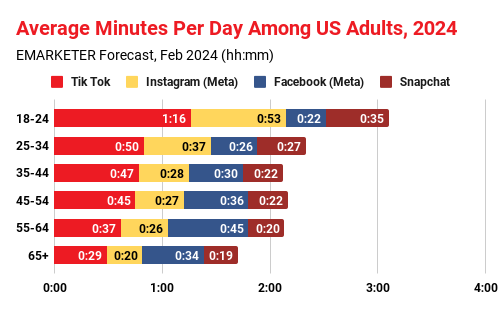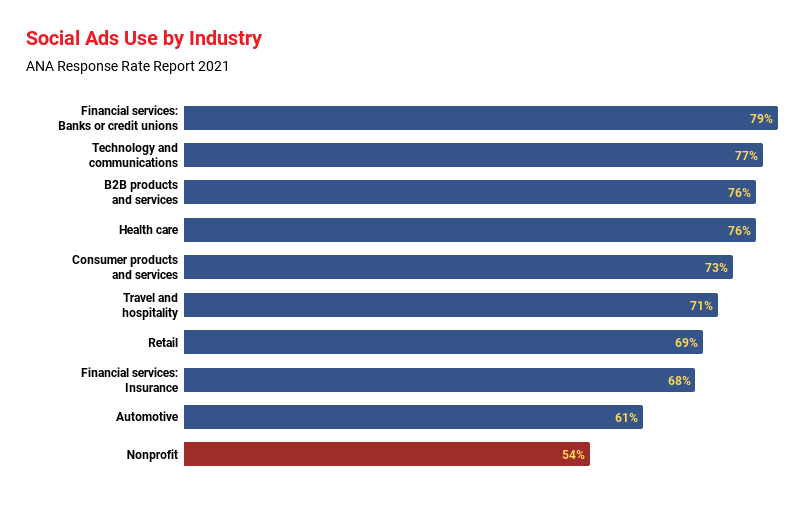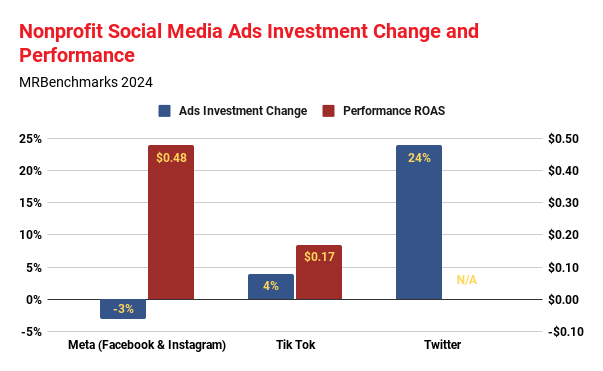Donors Are on Their Phones, and Nonprofits Need To Pick Up !
Today smartphones have become the primary device through which people engage with media, particularly social newsfeeds. According to recent data from Harmony Healthcare IT, US adults are spending an average of 4 hours and 37 minutes per day on mobile devices, with social media accounting for half of this time. Platforms like Facebook, Instagram, and Tik Tok have transformed into crucial channels for consuming news and entertainment and is the primary point of attention for younger supporters of nonprofit organizations.

Despite the extensive use of social media by the general public, nonprofits lag behind other sectors in leveraging social media ads effectively. Data from the Association of National Advertisers (ANA) indicates that while industries like financial services, technology, and healthcare are investing heavily in social media advertising, nonprofits are not keeping pace. The ANA’s Response Rate Report highlights that social media ad spending by nonprofits is significantly lower compared to other industries, with only 54% using paid social ads.

Though digital advertising spending has seen an increase of 13% in the latest MRbenchmarks 2024 report, social has had mixed investment in spending. Despite Meta having almost 2.8x return on ad spend (ROAS) as well as users spending more time on Meta’s Facebook & Instagram platforms, Meta has strangely seen a decrease in advertising investment while TikTok and Twitter have seen increases.

The dominance of smartphones in daily media consumption presents a unique opportunity for nonprofits. Mobile greatly overshadows all other media channels providing a compelling case to adjust communications strategy accordingly. By increasing their presence on social media platforms through targeted ads, nonprofits can significantly enhance their visibility and engagement with potential donors and supporters when their attention is on smartphones. Social media ads offer precise targeting capabilities through AI learning, allowing nonprofits to reach specific audiences that resonate with the mission, connecting with the most relevant constituents where they spend most of their time.
However, the underutilization of social media ads by nonprofits means they are missing out on the potential benefits of these platforms. Effective social media advertising requires a strategic approach and investment in building a digital advertising capability to ensure they are top-of-mind for their prospective supporters. There are five focus areas for an effective digital capability:
- Who – Audience: Understanding the target constituent
- Where – Platform: An efficient and effective place to find the audience
- What – Message: Crafting a message specific to the platform that induces behavior
- How – Activation: Operating and optimizing the campaign
- Why – Measurement: Leveraging data analytics to improve and learn
One way for nonprofits to enhance their social media advertising is by learning from successful campaigns in other industries. Consumer Goods, for instance, use a combination of brand placement, storytelling, clear calls to action, and iterative learning. Nonprofits can adopt similar tactics, creating emotionally resonant content that highlights their impact and connects the viewer to mission success. Additionally, utilizing tools like Meta Ads Manager features can help nonprofits learn how their creative is performing and optimize to drive results.
While smartphones and social media dominate the daily media consumption of US adults, nonprofits can capitalize on this trend through social media advertising. By increasing their investment and adopting best practices from other sectors, nonprofits can improve their outreach and engagement, ultimately driving greater support for their causes. As social media continues to evolve, it is imperative for nonprofits to stay ahead of the curve and leverage these platforms to their full potential.
Mike Scafidi
CTO - Partner
Mike has led organizational transformations by integrating people, marketing, data, and technology. With 25+ years in digital marketing at PepsiCo and Publicis, he brings a wealth of brand and agency experience. His nonprofit work spans the arts, healthcare, environmental, and adoption sectors. Named in the top 100 Digirati.
